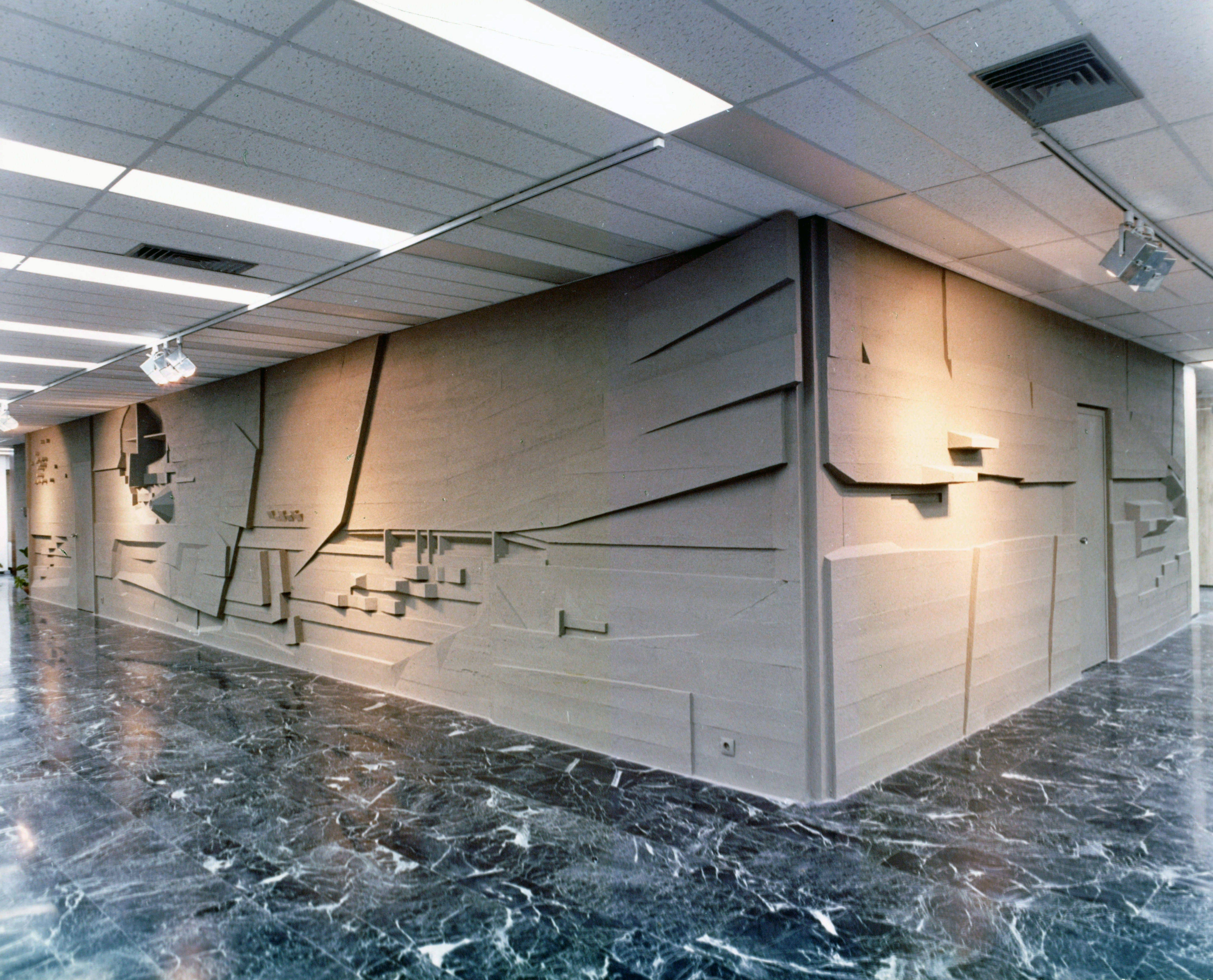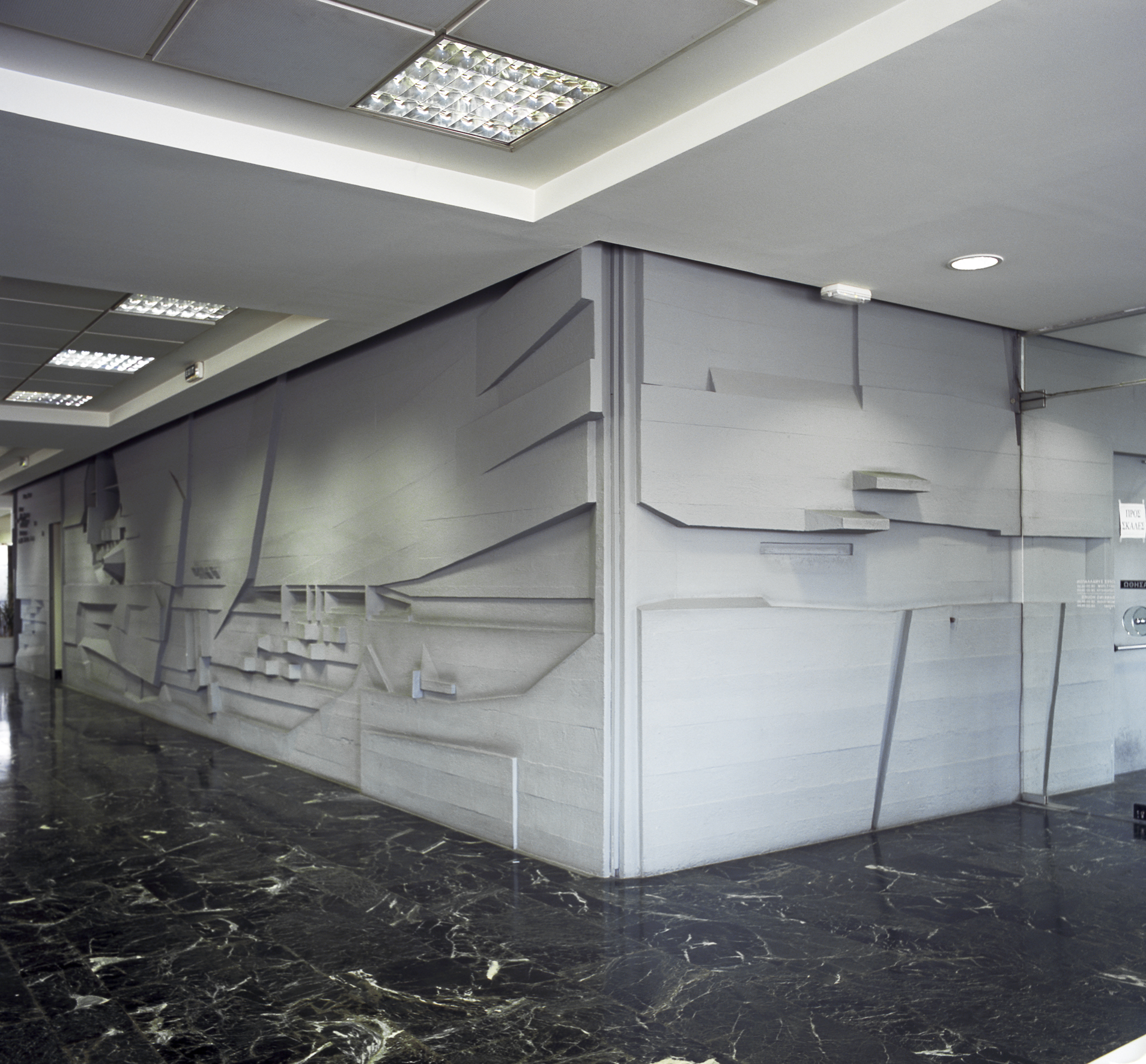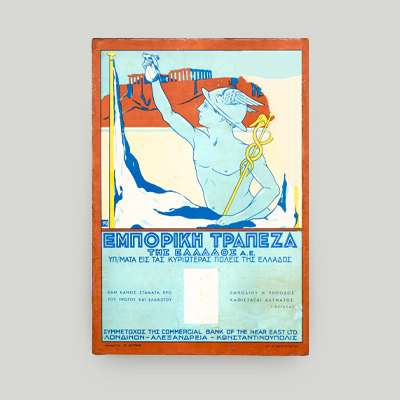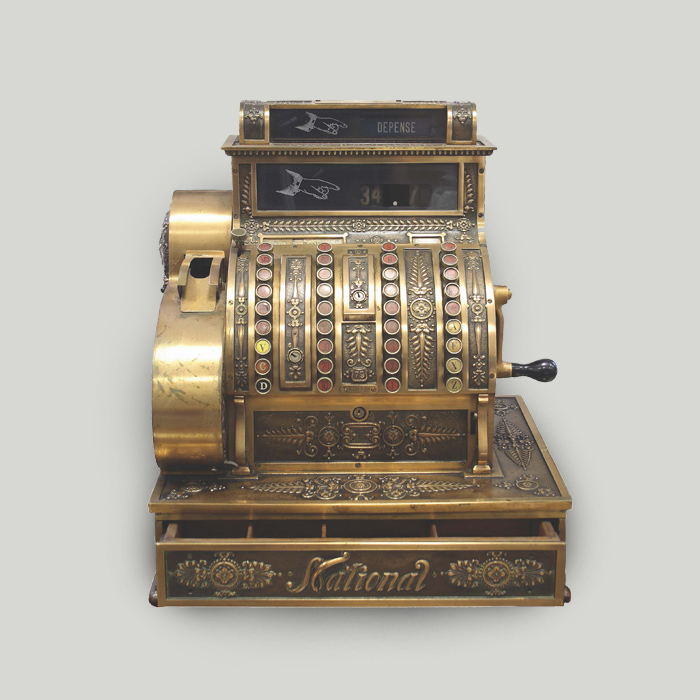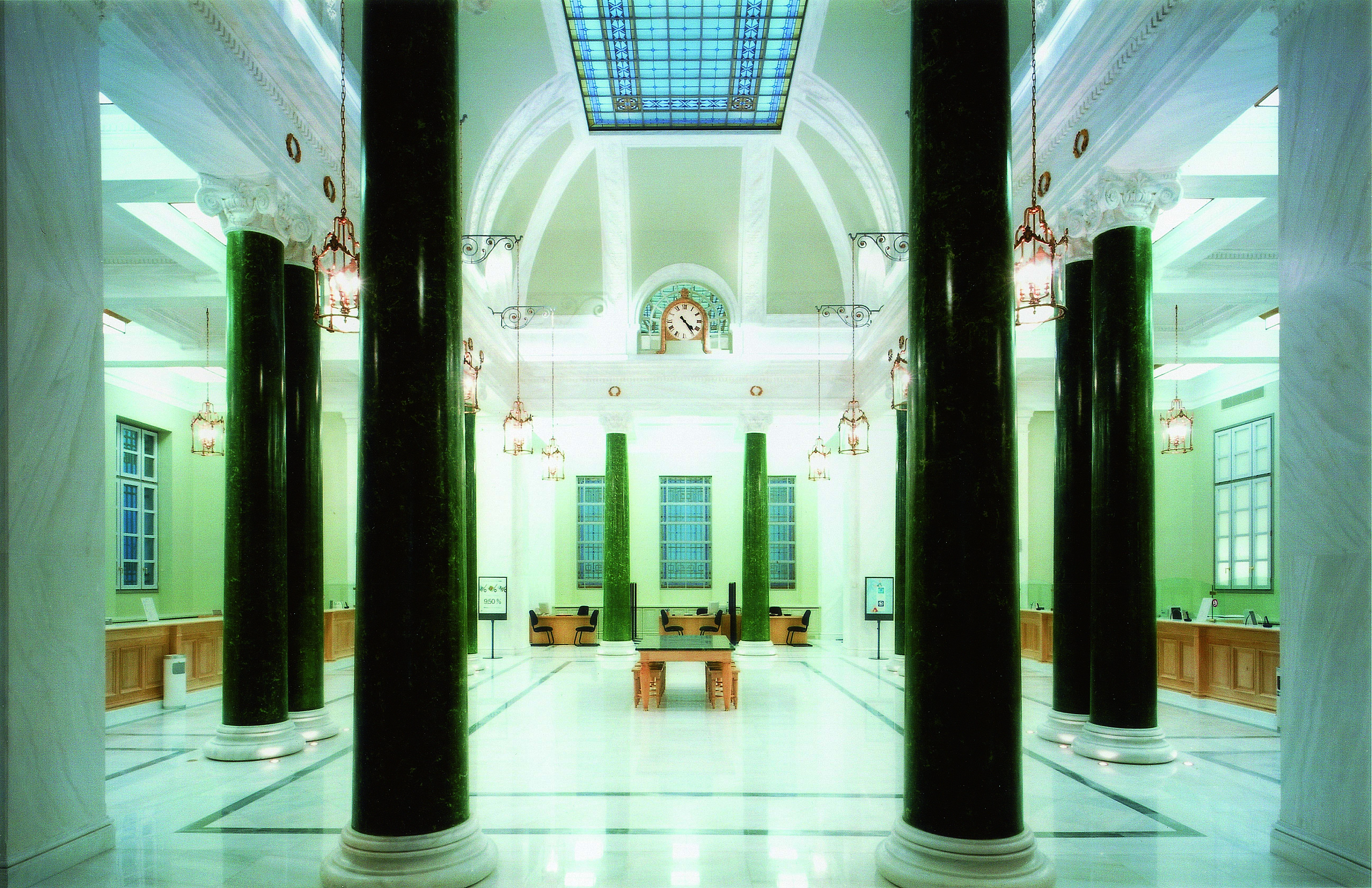Cultural contribution of Alpha Bank
Throughout its history, Alpha Bank has consistently promoted culture and the arts. Through painstaking effort, the bank has created the Art Collection, the Numismatic Collection and the Historical Archives and produced interesting publications. In the context of this constant cultural contribution, it is now a tradition for the bank to commission works by established artists, especially to decorate new major branches.
Large-scale, two-sided wall relief by avant-garde artist Cosmas Xenakis. The work was commissioned for the entrance of the central branch located at the first floor of the Athens Tower.
Xenakis’ familiar abstract language is present in this idiosyncratic composition, where sculpture and architecture merge and amalgamate to produce a deeply expressive ambience.
A consistent interest in art
Banque de Crédit Commercial Hellénique showed a keen interest in purchasing works of art since its very first years of operation.
The commissioned portraits of the bank’s founders and Chairs of the Board were the nucleus around which an entire art collection was compiled. Other paintings were purchased individually to enrich the collection.
Building up the Art Collection
Renamed Commercial Credit Bank after 1947, the bank achieved rapid growth in the years following WWII. The occasional acquisitions evolved into a permanent project for the bank.
In the mid-1960s, under the direction of Spyros J. Costopoulos, it was decided that the branches would be decorated with works by Greek artists. In this context, the bank commissioned avant-garde Greek artists to create large-scale works for selected new branches throughout Greece.
Soon, the bank – now renamed Credit Bank and with Yannis Costopoulos at the helm – decided to commission one work by a Greek artist for every new branch.
To further enrich the collection, this new practice was complemented with regular purchases of works by Greek artists. This is how the Alpha Bank Art Collection came to be one of the most important collections in Greece.
The beginning of the bank’s publishing activity
In 1963 Commercial Credit Bank published its first wall calendar, which was warmly welcomed by the public.
The calendars, published to an exceptionally high standard until 1978, focused either on the history of modern Greece or on modern and contemporary Greek art.
In 1971, on the 150th anniversary since the onset of the Greek War of Independence, the bank started its long publishing tradition with 2 major volumes: The Greek Navy in 1821 and Castles and Cities of Morea.
The list of Publications gradually grew longer and included volumes on art, history and archaeology produced in collaboration with established academics, prominent writers and distinguished artists.
The bank’s cultural contribution in more recent years
By initiative of Yannis Costopoulos, 1972 saw the start of the Numismatic Collection, which would gradually grow into one of the most important numismatic collections in the world.
In 1979 the bank’s President Spyros J. Costopoulos and his wife Eurydice made a donation to establish the J. F. Costopoulos Foundation. The Foundation would aim at supporting and promoting the Greek culture and civilisation within and beyond the country’s borders.
In 2000, following the merger between Alpha Credit Bank and Ionian and Popular Bank, a decision was made to establish the Historical Archives. The Archives would contribute to a stronger corporate identity and create a sense of historical memory for the Group.
On 17 October 1972 Credit Bank officially opened its two-storey branch at the Athens Tower, a then-brand-new structure that has been one of the most recognisable landmarks of the Athenian skyline ever since.
Established artist Cosmas Xenakis created a large-scale, two-sided wall relief to grace the entrance to the Athens Tower branch, located at the first floor of the structure. Geometric patterns rhythmically alternate between high and sunken relief covering an impressive 64 sq m to create a composition that remains light and flowing in all its expressionist, awe-inspiring contrast.
The Alpha Bank Historical Archives are not open to the public.
Research visits can be organised upon request.
Contact us to request a visit.
